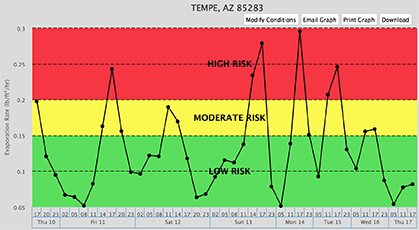Free App Predicts Plastic Concrete Shrinkage by Zip Code
A building superintendent turned professor used a bad experience placing concrete as the inspiration to develop a free, web-based application that tracks weather patterns and humidity levels to avoid cracking from plastic concrete shrinkage.
“We had to pull out a slab of concrete because we didn’t check the weather that day,” says Mark Grinter, who is now an
assistant professor of construction at Southern Illinois University Edwardsville’s School of Engineering. Years later, he developed the Plastic Crack Risk Calculator, which pings the National Oceanic and Atmospheric Association for weather predictions for any U.S. ZIP code.
The web-app interface directs users to enter a ZIP code. With this information, it does the job of evaporation-rate nomographs,
which are manual calculators used to foretell the development of plastic shrinkage cracks.
“We used to get the temperature, wind and humidity from local weather-channel apps and put it into the [American Concrete
Institute’s nomograph] chart,” says Gary Korte, executive vice president of field operations at Korte Co., St. Louis.
“You enter the values in an algebraic formula to get the results,” says Grinter. “If you want to look at the whole week, you need to do it 50 times.”
Grinter’s app calculates those values every hour for the next seven days and then rates the risk of evaporation as high, medium or low. Users can create a user name and sign up for another useful feature that allows them not only to do calculations but also to
set up alerts. If the humidity or temperature reaches a certain level, an automatic notification is sent to the user’s email. Users can
also adjust the conditions of the concrete and compute risk factors for wind levels.




